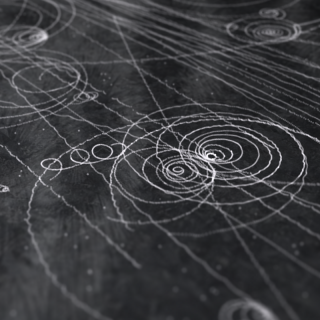General
The principal objectives of this project are: 1) to study the structure and dynamics of the solar interior, 2) to extend this study to other stars, 3) to search for extrasolar planets using photometric methods (primarily by transits of their host stars) and their characterization (using radial velocity information) and 4) the study of the planetary atmospheres.
To reach our first objective, we use Global Helioseismology (analysis of the solar oscillation eigenmodes) and Local Helioseismology (that uses travel waves). Solar seismology allows to accurately infer information about the internal structure and dynamics of the Sun,. This project covers the various necessary aspects to attain the aforementioned objectives: instrumental, observational, reduction, analysis and interpretation of data and, finally, theoretical developments of inversion techniques and development of structure and evolution models.
On the other hand, the Astroseismology aims to obtain a similar knowledge of other stars. Thanks to the huge number of stars observed by CoRoT, Kepler and TESS space missions it is possible to extract seismic global parameters of hundreds of stars; both solar type and red giants. Furthermore, the recent deployment and beginning of observations with the high precision spectrographs of the SONG (Stellar Observations Network Group) ground-based telescopes will substantially improve the characterization of the eigenmodes spectrum in bright stars.
The strategy of using planetary transits to discover new planets around other stars consists of the photometric detection of the dimming of the light of the star when one of its planets passes, or ‘transits’ in front of it. Currently this method is the preferred one for the study of small planets, not only due to its sensitivity, but also because this method allows a more detailed investigation of the planets found (e.g. Planetary atmospheres). This technique is similar to the one that is used for helio- and asteroseismology and so some of its methods are a logical extension from that. However, it is also important to develop new algorithms and observing methods for the unequivocal detection and analysis of planets and to be able to distinguish them from false alarms.
The current horizon for studies of exoplanets with space missions involves new missions, beginning with the launch of CHEOPS, followed by TESS, JWST and in 2026, PLATO. Thus, there is presently a window of opportunity for ground-based facilities, and we are pursuing observations using mainly TNG, NOT y GTC.
Members
Results
Milestones
- Members of the team (P. G. Beck, H. Deeg, S. Mathur, F. H. Perez, C. Regulo) were involved in the discovery and characterization of a warm Saturn transiting a slightly evolved solar-like star (HD 89345) observed with the NASA K2 mission and confirmed with RV measurements. The seismic analysis of the star led to precise estimates of the stellar parameters.
- P.G.Beck lead two papers on binary systems hosting red-giant binaries, using asteroseismic techniques and data from the Kepler space telescope. Beck et al (2018a,b) allow a better understanding of the stellar structure of the stellar components, and the tidal interaction in binary systems. The internal mixing was investigated through measurements lithium.
- S. Mathur participated in the analysis of the first planet discovered with the NASA TESS mission, orbiting the star Pi Men. The seismic analysis led to a very marginal detection but gave a hint of the asteroseismic potential with the TESS data (Gandolfi et al. 2018).
- Project "Solar-SONG". For the first time, stellar instrumentation (SONG spectrograph) has been used to obtain precise measurements of the radial velocity of the Sun with high temporal cadence (4 sec.) and long duration (57 consecutive days) to allow the detailed study of the spectrum of oscillations ( p-modes) and obtain their global parameters
- The researchers Hans J. Deeg and Juan Antonio Belmonte coordinated the edition of the "Handbook of Exoplanets", four volumes with 160 articles by more than 300 specialists in exoplanetology. Three years of intensive work have resulted in a complete documentation on the state of the art of the studies of the planets beyond the Solar System.
Scientific activity
Related publications
-
Pyodine: an open, flexible reduction software for iodine-calibrated precise radial velocities
Context. Many telescopes use an iodine (I 2) absorption cell to measure precise radial velocities (RVs), but their data reduction pipelines are all tailored to their respective instrumental characteristics and not openly accessible. Aims: For existing and future projects dedicated to measuring precise RVs, we have created an open-source, flexible
Heeren, Paul et al.Advertised on:
62023 -
TOI-733 b: A planet in the small-planet radius valley orbiting a Sun-like star
We report the discovery of a hot (T eq ≈ 1055 K) planet in the small-planet radius valley that transits the Sun-like star TOI-733. It was discovered as part of the KESPRINT follow-up program of TESS planets carried out with the HARPS spectrograph. TESS photometry from sectors 9 and 36 yields an orbital period of {P {{orb}}} = 4.884765 - 2.4e - 5 +
Georgieva, Iskra Y. et al.Advertised on:
62023 -
Multi-campaign asteroseismic analysis of eight solar-like pulsating stars observed by the K2 mission
The NASA K2 mission that succeeded the nominal Kepler mission observed several hundred thousand stars during its operations. While most of the stars were observed in single campaigns of ∼80 days, some of them were targeted for more than one campaign. We perform an asteroseismic study of a sample of eight solar-like stars observed during K2
González-Cuesta, L. et al.Advertised on:
62023 -
TOI-5678b: A 48-day transiting Neptune-mass planet characterized with CHEOPS and HARPS★
Context. A large sample of long-period giant planets has been discovered thanks to long-term radial velocity surveys, but only a few dozen of these planets have a precise radius measurement. Transiting gas giants are crucial targets for the study of atmospheric composition across a wide range of equilibrium temperatures and, more importantly, for
Ulmer-Moll, S. et al.Advertised on:
62023 -
Refined parameters of the HD 22946 planetary system and the true orbital period of planet d★
Context. Multi-planet systems are important sources of information regarding the evolution of planets. However, the long-period planets in these systems often escape detection. These objects in particular may retain more of their primordial characteristics compared to close-in counterparts because of their increased distance from the host star. HD
Garai, Z. et al.Advertised on:
62023 -
TESS and CHEOPS discover two warm sub-Neptunes transiting the bright K-dwarf HD 15906
We report the discovery of two warm sub-Neptunes transiting the bright (G = 9.5 mag) K-dwarf HD 15906 (TOI 461, TIC 4646810). This star was observed by the Transiting Exoplanet Survey Satellite (TESS) in sectors 4 and 31, revealing two small transiting planets. The inner planet, HD 15906 b, was detected with an unambiguous period but the outer
Tuson, A. et al.Advertised on:
82023 -
Two warm Neptunes transiting HIP 9618 revealed by TESS and Cheops
HIP 9618 (HD 12572, TOI-1471, TIC 306263608) is a bright (G = 9.0 mag) solar analogue. TESS photometry revealed the star to have two candidate planets with radii of 3.9 ± 0.044 R ⊕ (HIP 9618 b) and 3.343 ± 0.039 R ⊕ (HIP 9618 c). While the 20.77291 d period of HIP 9618 b was measured unambiguously, HIP 9618 c showed only two transits separated by a
Osborn, H. P. et al.Advertised on:
82023 -
A new dynamical modeling of the WASP-47 system with CHEOPS observations
Among the hundreds of known hot Jupiters (HJs), only five have been found to have companions on short-period orbits. Within this rare class of multiple planetary systems, the architecture of WASP-47 is unique, hosting an HJ (planet-b) with both an inner and an outer sub-Neptunian mass companion (-e and -d, respectively) as well as an additional non
Nascimbeni, V. et al.Advertised on:
52023 -
Revisiting the Red Giant Branch Hosts KOI-3886 and ι Draconis. Detailed Asteroseismic Modeling and Consolidated Stellar Parameters
Asteroseismology is playing an increasingly important role in the characterization of red giant host stars and their planetary systems. Here, we conduct detailed asteroseismic modeling of the evolved red giant branch (RGB) hosts KOI-3886 and ι Draconis, making use of end-of-mission Kepler (KOI-3886) and multisector TESS (ι Draconis) time-series
Campante, Tiago L. et al.Advertised on:
52023 -
Temporal variation of the photometric magnetic activity for the Sun and Kepler solar-like stars
Context. The photometric time series of solar-like stars can exhibit rotational modulation, that is, brightness variations due to active regions co-rotating with the stellar surface. These signatures allow us to constrain properties of stellar rotation and magnetic activity. Aims: In this work we investigate the behavior, particularly the
Santos, A. R. G. et al.Advertised on:
42023 -
A super-Earth and a mini-Neptune near the 2:1 MMR straddling the radius valley around the nearby mid-M dwarf TOI-2096
Context. Several planetary formation models have been proposed to explain the observed abundance and variety of compositions of super-Earths and mini-Neptunes. In this context, multitransiting systems orbiting low-mass stars whose planets are close to the radius valley are benchmark systems, which help to elucidate which formation model dominates
Pozuelos, F. J. et al.Advertised on:
42023 -
The geometric albedo of the hot Jupiter HD 189733b measured with CHEOPS
Context. Measurements of the occultation of an exoplanet at visible wavelengths allow us to determine the reflective properties of a planetary atmosphere. The observed occultation depth can be translated into a geometric albedo. This in turn aids in characterising the structure and composition of an atmosphere by providing additional information on
Krenn, A. F. et al.Advertised on:
42023 -
Glancing through the debris disk: Photometric analysis of DE Boo with CHEOPS
Aims: DE Boo is a unique system, with an edge-on view through the debris disk around the star. The disk, which is analogous to the Kuiper belt in the Solar System, was reported to extend from 74 to 84 AU from the central star. The high photometric precision of the Characterising Exoplanet Satellite (CHEOPS) provided an exceptional opportunity to
Rando, N. et al.Advertised on:
32023 -
A full transit of v<SUP>2</SUP> Lupi d and the search for an exomoon in its Hill sphere with CHEOPS
The planetary system around the naked-eye star v 2 Lupi (HD 136352; TOI-2011) is composed of three exoplanets with masses of 4.7, 11.2, and 8.6 Earth masses (M ⊕). The TESS and CHEOPS missions revealed that all three planets are transiting and have radii straddling the radius gap separating volatile-rich and volatile-poor super-earths. Only a
Barrado, D. et al.Advertised on:
32023 -
TOI-836: A super-Earth and mini-Neptune transiting a nearby K-dwarf
We present the discovery of two exoplanets transiting TOI-836 (TIC 440887364) using data from TESS Sector 11 and Sector 38. TOI-836 is a bright (T = 8.5 mag), high proper motion (~200 mas yr -1), low metallicity ([Fe/H]≈-0.28) K-dwarf with a mass of 0.68 ± 0.05 M ⊙ and a radius of 0.67 ± 0.01 R ⊙. We obtain photometric follow-up observations with a
Hawthorn, Faith et al.Advertised on:
42023 -
TOI-1055 b: Neptunian planet characterised with HARPS, TESS, and CHEOPS
Context. TOI-1055 is a Sun-like star known to host a transiting Neptune-sized planet on a 17.5-day orbit (TOI-1055 b). Radial velocity (RV) analyses carried out by two independent groups using nearly the same set of HARPS spectra have provided measurements of planetary masses that differ by ∼2σ. Aims: Our aim in this work is to solve the
Bonfanti, A. et al.Advertised on:
32023 -
Hint of an exocomet transit in the CHEOPS light curve of HD 172555
HD 172555 is a young (~20 Myr) A7V star surrounded by a 10 au wide debris disk suspected to be replenished partly by collisions between large planetesimals. Small evaporating transiting bodies, that is exocomets, have also been detected in this system by spectroscopy. After β Pictoris, this is another example of a system possibly witnessing a phase
Kiefer, F. et al.Advertised on:
32023 -
TESS Asteroseismic Analysis of HD 76920: The Giant Star Hosting an Extremely Eccentric Exoplanet
The Transiting Exoplanet Survey Satellite (TESS) mission searches for new exoplanets. The observing strategy of TESS results in high-precision photometry of millions of stars across the sky, allowing for detailed asteroseismic studies of individual systems. In this work, we present a detailed asteroseismic analysis of the giant star HD 76920
Jiang, Chen et al.Advertised on:
32023 -
Rotational modulation in A and F stars: magnetic stellar spots or convective core rotation?
The Kepler mission revealed a plethora of stellar variability in the light curves of many stars, some associated with magnetic activity or stellar oscillations. In this work, we analyse the periodic signal in 162 intermediate-mass stars, interpreted as Rossby modes and rotational modulation - the so-called hump and spike feature. We investigate
Henriksen, Andreea I. et al.Advertised on:
32023 -
Connecting photometric and spectroscopic granulation signals with CHEOPS and ESPRESSO
Context. Stellar granulation generates fluctuations in photometric and spectroscopic data whose properties depend on the stellar type, composition, and evolutionary state. Characterizing granulation is key for understanding stellar atmospheres and detecting planets. Aims: We aim to detect the signatures of stellar granulation, link spectroscopic
Sulis, S. et al.Advertised on:
22023
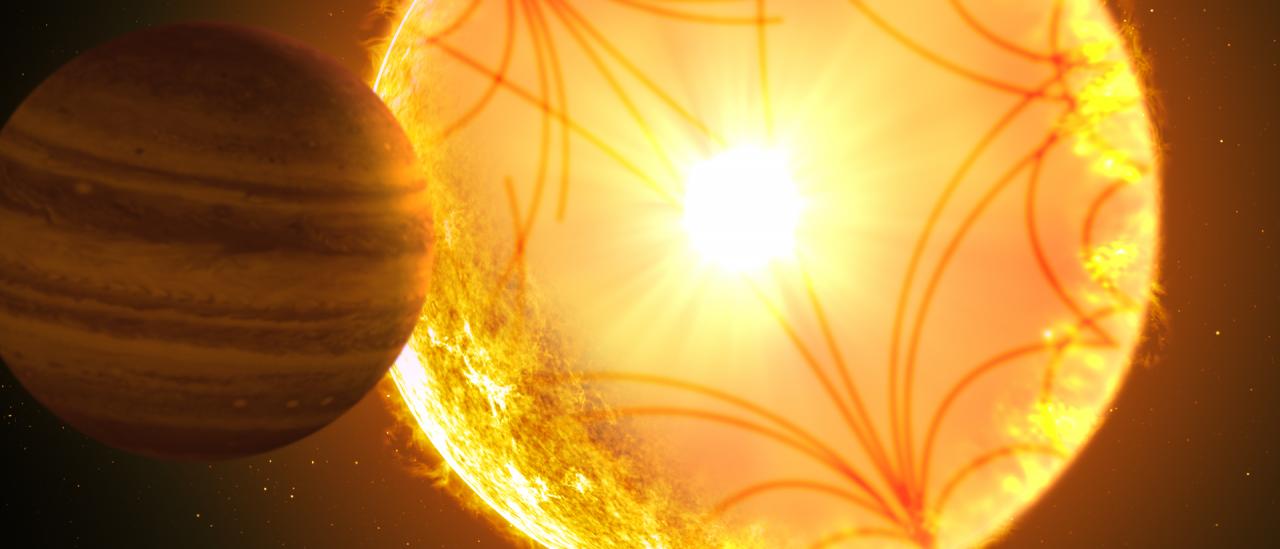
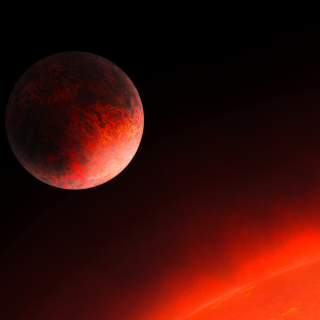
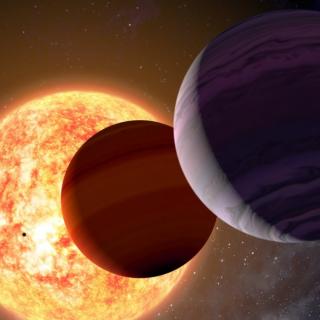
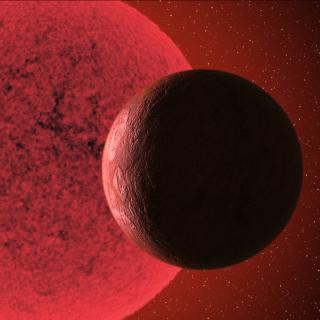

![Izquierda - Imagen RGB de la nebulosa de Orión y M43 obtenida filtros estrechos con la cámara WFC en el INT: H alfa (rojo), [S II] 6716+30 (verde), [O III] 5007 (azul). Derecha - Imagen en falso color de la nebulosa planetaria NGC 6778. En azul se ve la emisión en la línea de O II tomada con el filtro sintonizable azul del instrumento OSIRIS en el GTC; en verde imagen con el filtro estrecho de [O III] del Nordic Optical Telescope (NOT). Izquierda - Imagen RGB de la nebulosa de Orión y M43 obtenida filtros estrechos con la cámara WFC en el INT: H alfa (rojo), [S II] 6716+30 (verde), [O III] 5007 (azul). Derecha - Imagen en falso color de la nebulosa planetaria NGC 6778. En azul se ve la emisión en la línea de O II tomada con el filtro sintonizable azul del instrumento OSIRIS en el GTC; en verde imagen con el filtro estrecho de [O III] del Nordic Optical Telescope (NOT).](/sites/default/files/styles/crop_square_2_2_to_320px/public/images/project/imagen_web.jpg?itok=fsBmV9CO)
